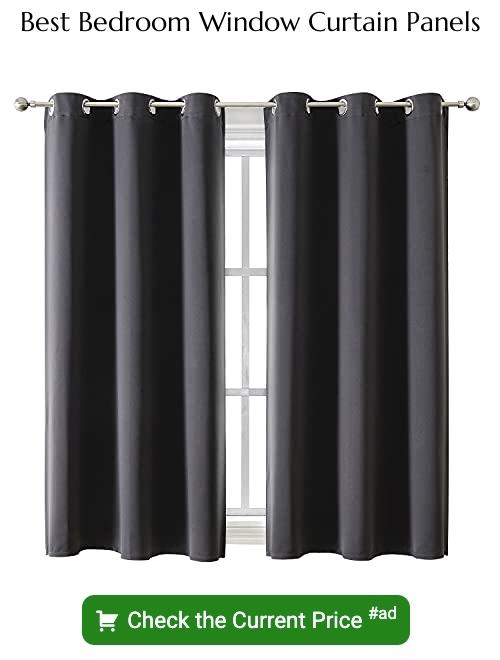Discover the art of concealing an off-center window behind your bed with these clever design tips and tricks that’ll transform your bedroom aesthetics in no time.
Have you ever walked into a bedroom and noticed that the window is off-center, throwing off the entire room’s symmetry? It can be frustrating to try to decorate around it, especially if it’s in an awkward spot behind your bed. But fear not! There are several clever ways to hide an off-center window and create a cohesive look in your bedroom.
In this post, we’ll explore some simple yet effective solutions for disguising that pesky window and making your space feel balanced and harmonious. So let’s dive in!
Key takeaways:
- Strategically place mirrors to create the illusion of another window.
- Use furniture like bookshelves or room dividers to hide the off-center window.
- Choose curtains or blinds that complement your bedroom decor.
- Hang wall decor or artwork to draw attention away from the window.
- Incorporate color schemes and patterns that distract from the off-center window.
Challenges of Off-Center Windows in Bedrooms
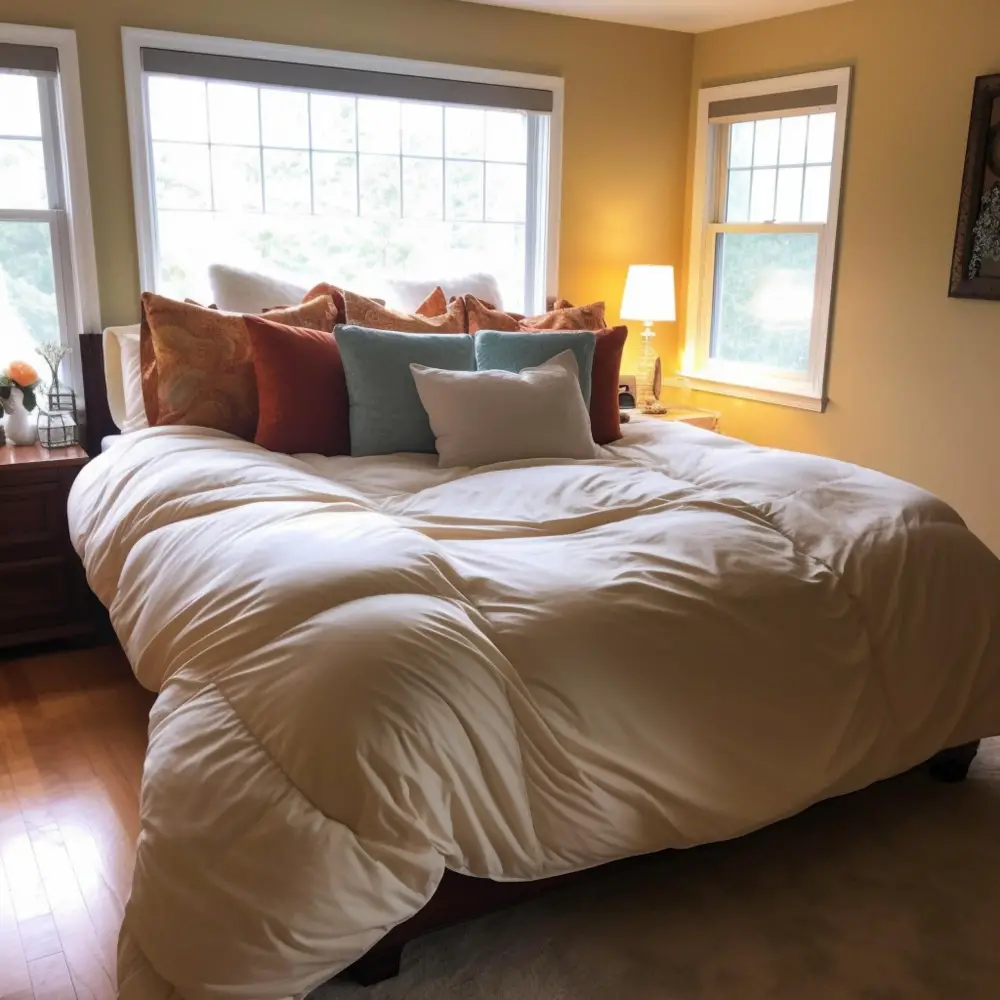
They can throw off the balance of the room and make it difficult to create a cohesive look. The position of an off-center window behind your bed is particularly tricky, as you want your sleeping area to feel comfortable and symmetrical.
One common issue with off-center windows in bedrooms is that they often limit furniture placement options. You may find yourself struggling to arrange your bed, nightstands, or other pieces around the window without making everything look awkward or unbalanced.
Another challenge with an off-center window behind a bed is that it can disrupt natural light flow into the room. This could lead to uneven lighting throughout different parts of space, which might affect how you use certain areas for reading or relaxing.
Assessing the Window Position
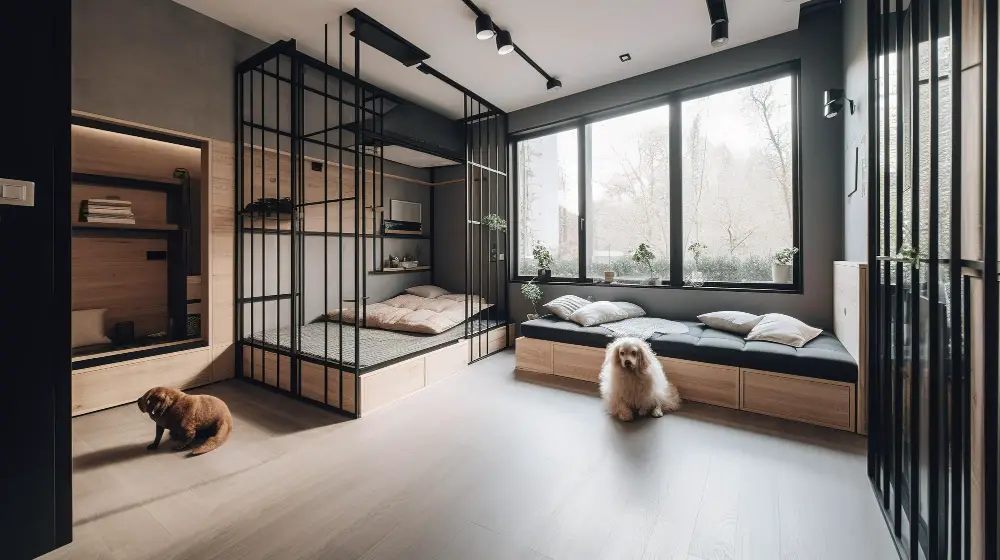
The first step is to determine how far off-center the window is and whether it can be moved or not. If moving the window isn’t an option, consider if there are any architectural features that could help balance out its placement.
Take note of where natural light enters your bedroom and how much privacy you need from outside sources. Assessing these factors will help you decide on a suitable solution for concealing your off-center window while still allowing enough light into space.
Another crucial aspect to consider when assessing the position of your off-centered windows is their size relative to other elements in the room such as furniture pieces like dressers or nightstands. You want everything in proportion so that nothing looks awkwardly placed or too small/big compared with others.
Measuring Your Bed and Window

This step is crucial in determining how much space you have to work with and what design solutions will be most effective. Start by measuring the width of your bed frame from one end to another, then measure its height from floor level up to where it meets the headboard.
Next, take measurements of your off-center window – start by measuring its width at different points along its length as this can vary depending on how far away from center it is placed. Then measure its height starting at floor level up until where you want curtains or blinds installed.
By taking these measurements into account, you’ll be able to determine which design solutions are best suited for hiding an off-center window behind a bed while still maintaining visual balance in your bedroom décor.
Benefits of Hiding Off-Center Windows Behind a Bed
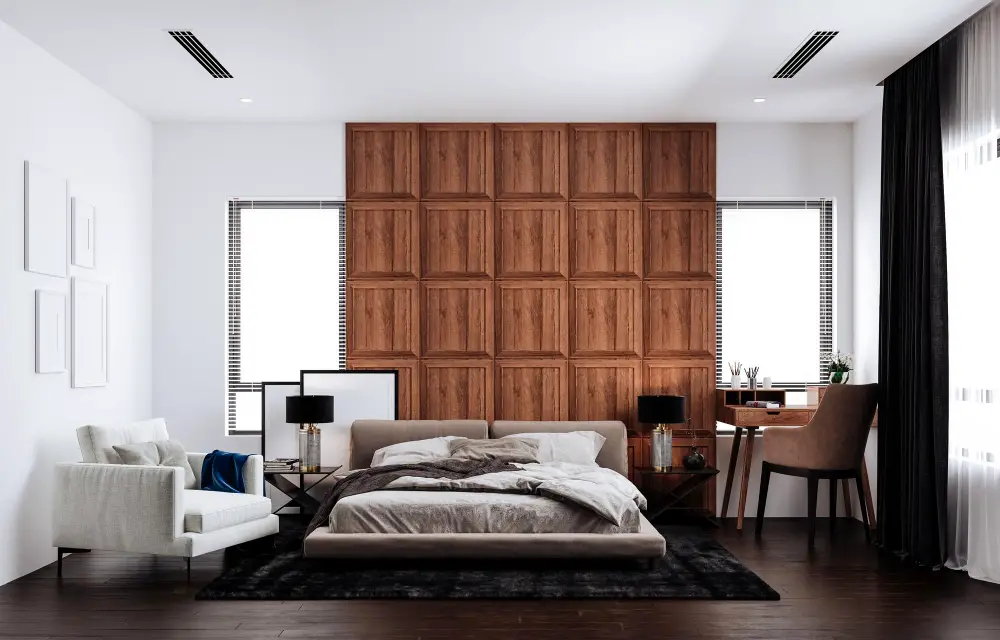
For one, it creates a more balanced look in the room by drawing attention away from the window’s awkward placement. This design trick also allows you to maximize natural light without sacrificing privacy or disrupting your sleep patterns.
Moreover, hiding an off-center window behind a bed provides ample opportunities for creative expression through various decor elements such as headboards, curtains or blinds, wall art pieces and other furniture items that complement your bedroom style.
By concealing the off-centeredness of windows with these clever design solutions mentioned above not only enhances visual appeal but also adds functionality to space while creating a cozy ambiance perfect for relaxation after long days at work.
Choose a Suitable Headboard
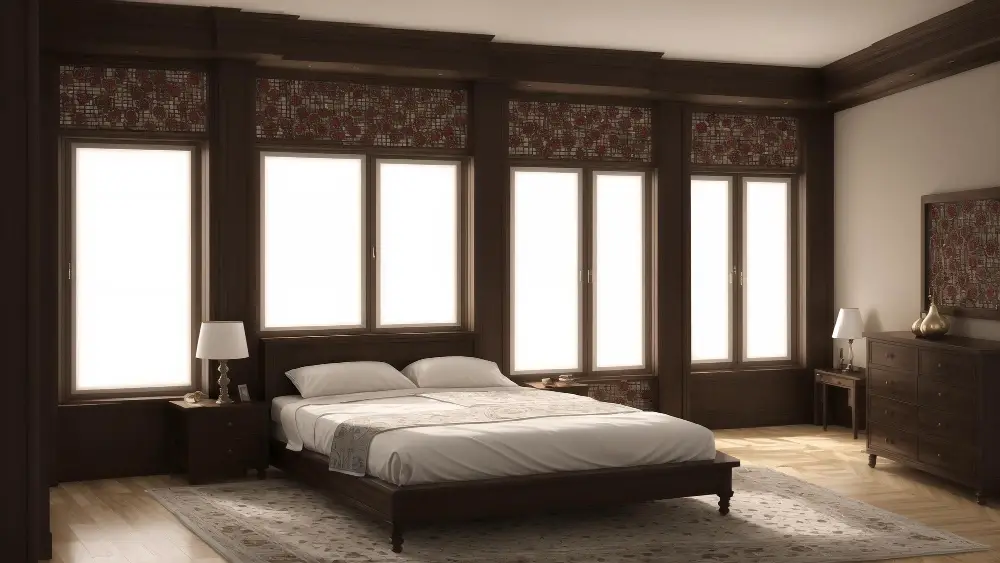
A headboard that is too small or doesn’t cover enough of the wall will only draw attention to the window’s placement. On the other hand, a large and imposing headboard can help balance out an off-center window by creating symmetry on either side.
Consider opting for a floor-to-ceiling upholstered headboard that spans across both sides of your bed. This type of design not only hides an off-center window but also adds texture and depth to your bedroom decor.
Another option is to choose a wooden or metal paneling-style headboard with intricate details that distract from any asymmetry in your room’s layout. You could even go for something more unique like a woven rattan or bamboo screen as they add visual interest while still serving their purpose.
Considering Bed Placement Alternatives
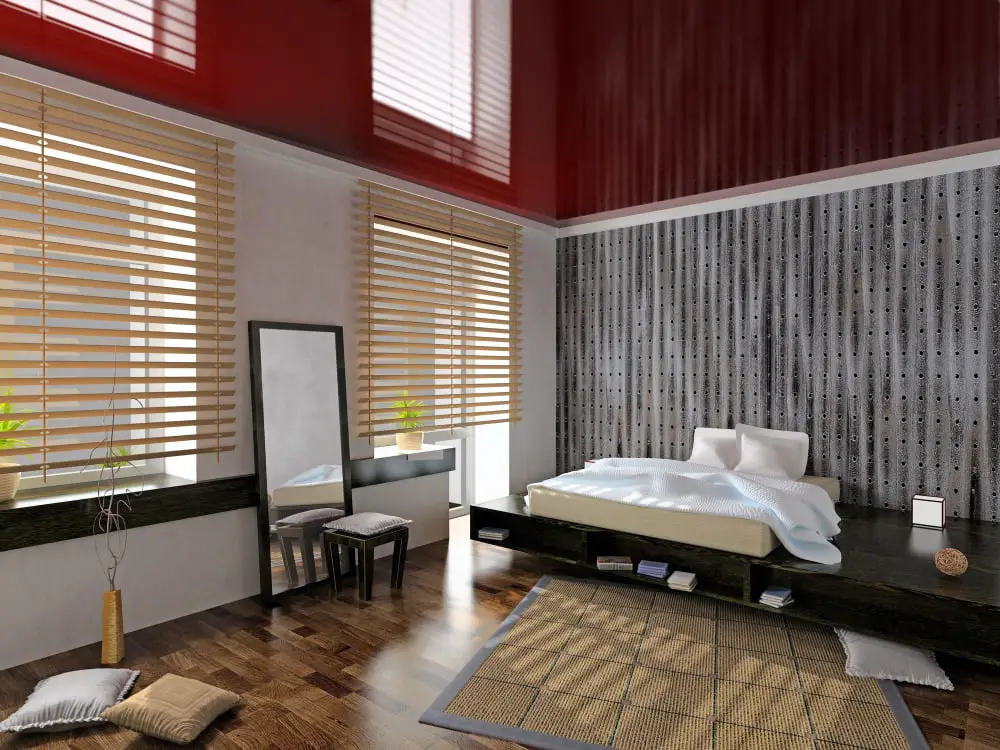
Depending on the size and layout of your bedroom, you may be able to shift your bed’s position so that it aligns with the window more naturally. For example, if you have a large enough room and a queen or king-sized bed, try placing it in front of the off-center window instead of against one wall.
This way, both sides will have equal space around them for nightstands or other furniture pieces.
Alternatively, if moving your entire bed isn’t feasible due to limited space or awkward angles in the room design – don’t worry! There are still plenty of ways to create balance and symmetry without having everything perfectly aligned with each other. In fact sometimes asymmetry can add interest and depth into a design scheme.
Opt for a Canopy Bed Design
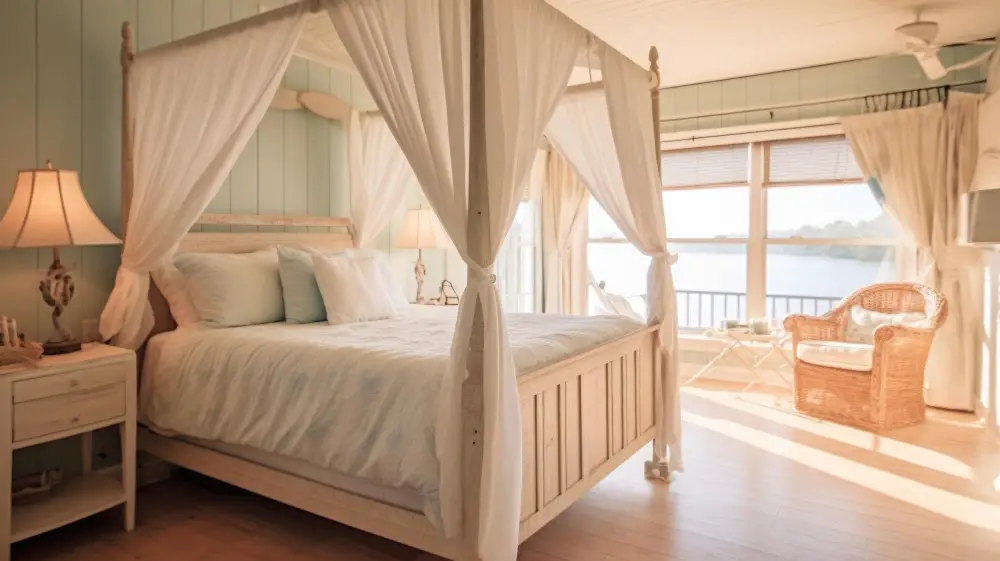
The tall, flowing curtains of a canopy can help to disguise the window’s placement and create a focal point in the room. Plus, it adds an element of luxury and elegance to your bedroom decor.
When choosing a canopy design, consider the size and shape of your bed as well as the height of your ceiling. A four-poster or platform-style frame works best with this type of design since they provide sturdy support for hanging curtains.
To further enhance this look, choose drapes that complement or contrast with other elements in your room such as bedding or wall color. You can also opt for sheer fabrics that allow natural light to filter through while still providing privacy.
Selecting Appropriate Curtains or Blinds
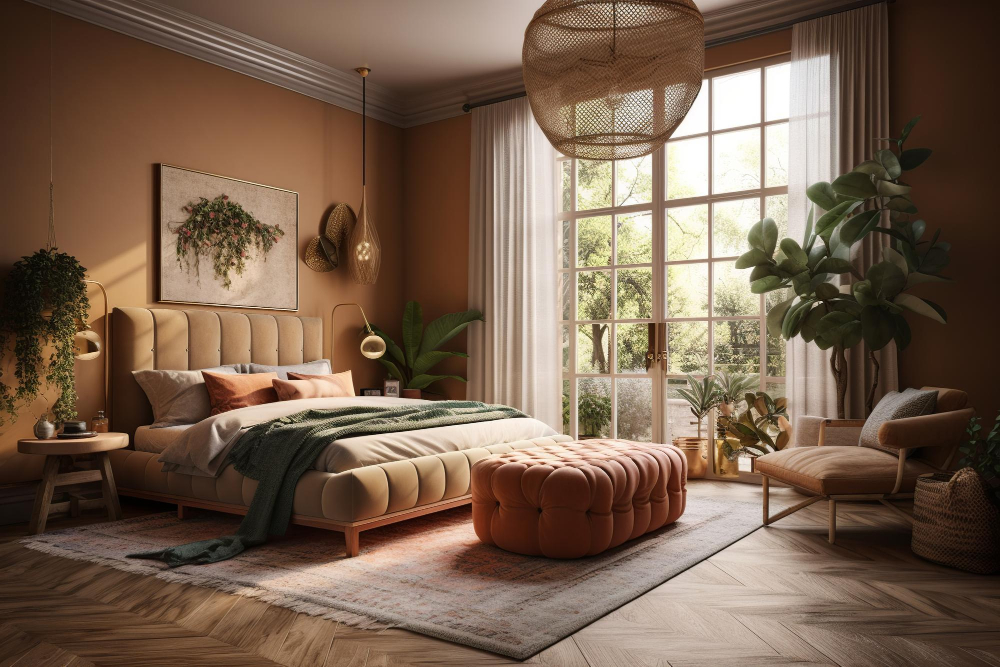
The key is to choose a style that complements your bedroom decor while also providing adequate coverage for the window.
If you have a small room, consider using light-colored curtains or sheer drapes that allow natural light to filter through and create an illusion of space. On the other hand, if you prefer complete privacy and darkness in your bedroom, opt for blackout shades or heavy-duty curtains that block out sunlight and noise.
Another factor to consider when choosing curtains is their length. Ideally, they should be long enough to cover both sides of the window frame entirely without touching the floor.
This will help create a streamlined look while also preventing dust buildup on fabric edges.
Blinds are another popular option for concealing off-center windows behind beds as they offer more flexibility in terms of light control and privacy settings than traditional drapes do. You can choose from various materials such as wood slats or vinyl panels depending on your preference.
Implementing Wall-to-Wall Drapes
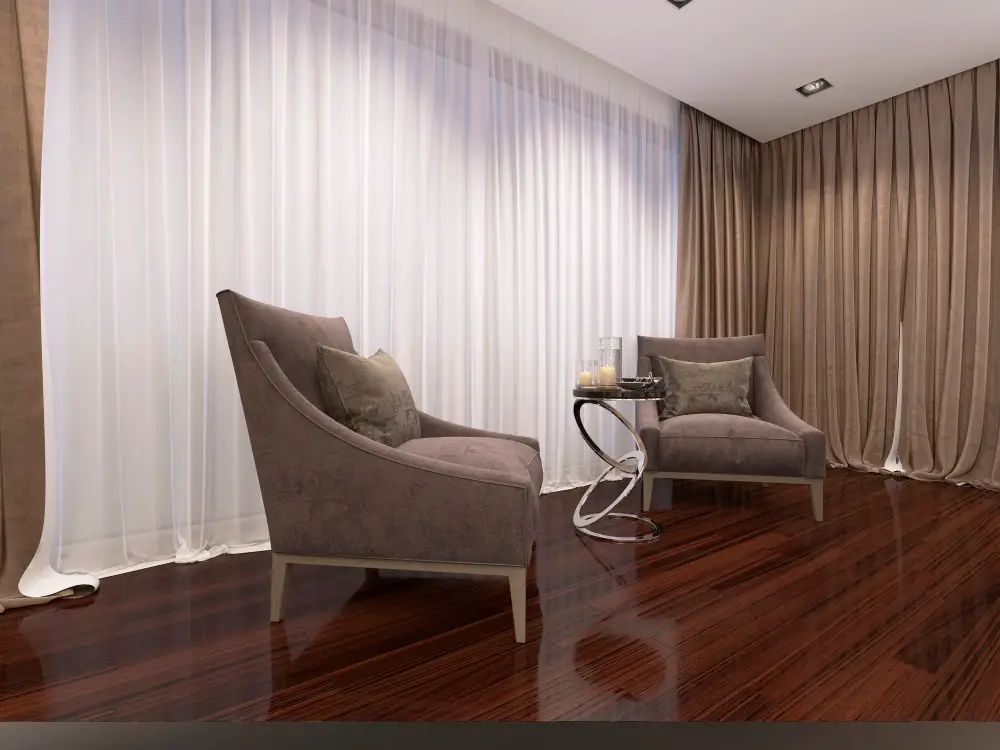
These floor-length curtains create the illusion of a larger window, making it appear more centered and balanced in the room. To implement this design solution, measure the width of your wall from one end to another and purchase curtains that match or exceed that measurement.
When hanging wall-to-wall drapes, ensure they’re installed high above the window frame for maximum impact. This will also make your ceiling look higher than it is! You can choose sheer or opaque fabrics depending on how much light you want filtering into your space.
Another benefit of using wall-to-wall drapes is their versatility in complementing different decor styles. Whether you prefer minimalist designs or bold patterns, there’s always a curtain style that’ll suit any taste.
Applying Blackout Shades for a Sleek Look
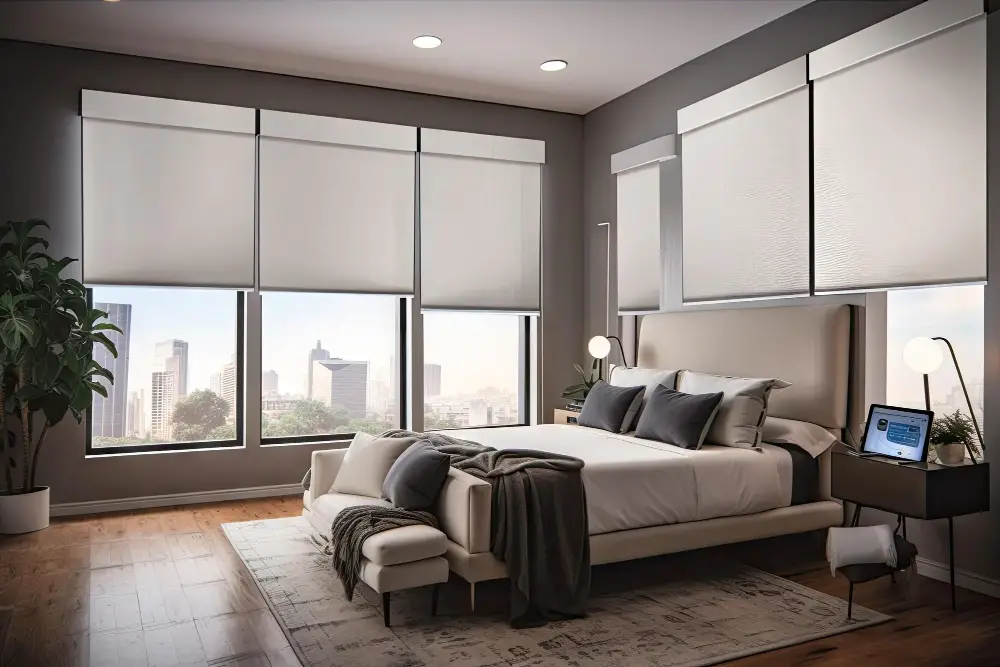
Not only do they provide complete privacy and light control, but they also create a seamless look that blends in with your wall color. Blackout shades come in various styles, including roller shades or cellular blinds that can be customized to fit any window size or shape.
When choosing blackout shades for your bedroom, consider the color scheme of your room and select a shade that complements it well. If you have neutral walls, opt for darker-colored blinds like black or navy blue to add depth and contrast.
Alternatively, if you have bold accent walls or colorful bedding sets in bright hues like reds or blues; choose lighter-colored blinds such as white.
Using Furniture to Disguise an Off-Center Window
This method works best if you have a larger bedroom with ample space for additional pieces of furniture. One option is to place a tall dresser or armoire in front of the window, which will not only conceal it but also provide extra storage space.
Alternatively, you can position a decorative screen or room divider in front of the window. This solution adds visual interest and texture while effectively hiding the off-center placement.
If you prefer a more minimalist look, consider placing two identical nightstands on either side of your bed and positioning them so that they cover up part of the window’s frame. You can then hang curtains or drapes from above to create an illusion that there’s no awkwardly placed windows at all!
Adding Shelves for Visual Balance
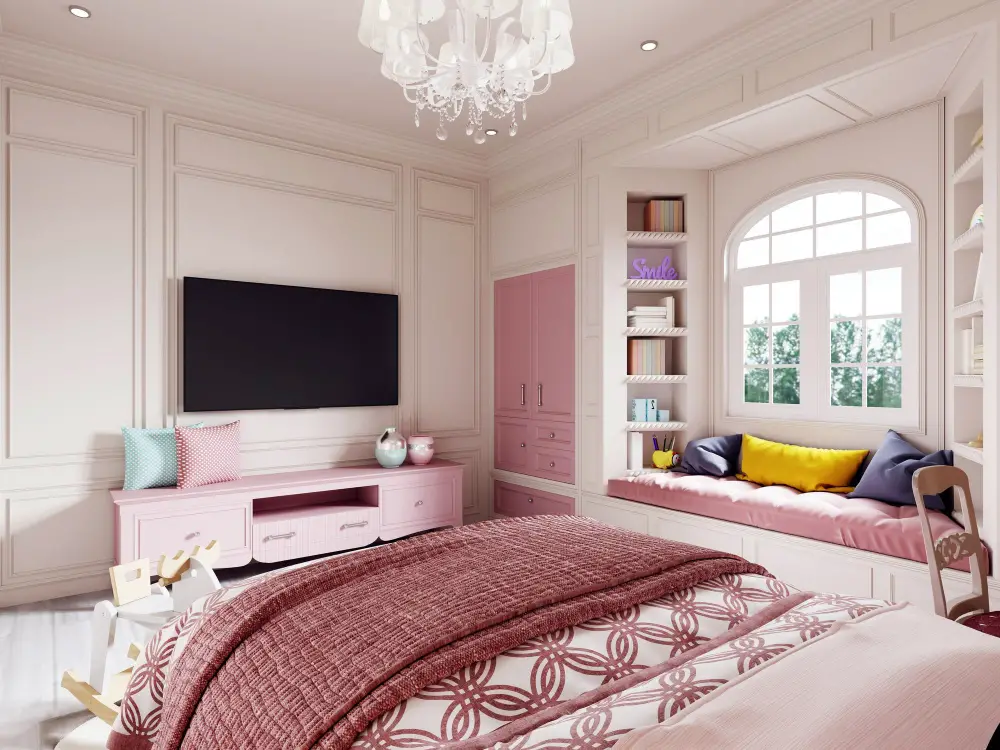
By placing a series of floating shelves on the wall adjacent to the window, you can draw attention away from its placement and add some much-needed storage space at the same time. You can use these shelves to display decorative items like books, plants, or picture frames that complement your existing decor style.
When it comes to shelf placement, consider positioning them symmetrically around your bed for maximum impact. This will help create a sense of harmony and balance in the room while also drawing attention away from any asymmetry caused by an off-center window.
Another option is using built-in shelving units that span across one entire wall of your bedroom. These types of units are perfect for creating a focal point in any room and provide ample storage space without taking up too much floor area.
Installing Built-In Storage Solutions
Not only will this provide ample storage space, but it can also create a seamless look in your bedroom. You can opt for custom-built cabinets or bookshelves that fit snugly around the window frame and extend all the way up to the ceiling.
This will not only conceal the off-center window but also add visual interest and depth to your room.
Another option is to install floating shelves on either side of the window frame, which can be used as nightstands or display areas for decorative items such as plants or picture frames. This approach works particularly well if you have limited floor space in your bedroom.
When choosing built-in storage solutions, make sure they complement other elements in your room’s design scheme such as color palette and furniture style.
Utilizing Tall Bookshelves
Not only do they provide ample storage space for books, decor items, and other essentials but also create visual balance in the room.
Tall bookshelves can be placed on either side of the bed to frame the window or even used as a headboard. This design trick works particularly well if you have high ceilings or want to add some vertical interest to your bedroom.
When selecting bookshelves, choose ones that match your existing decor style and color scheme. You can opt for open shelves or closed cabinets depending on how much privacy you need around the window area.
To further enhance this look, decorate with plants or artwork atop each shelf level while keeping it minimalistic so that it doesn’t overpower other elements in your bedroom’s design scheme.
Incorporating Mirrors to Hide Window Placement
By strategically placing mirrors on either side of the bed, you can reflect light and make it appear as though there is another window present. This technique works particularly well if you have a small room or limited natural light sources.
To incorporate mirrors into your design, consider using mirrored nightstands or dressers that flank each side of the bed. You could also hang large decorative mirrors above each nightstand for added visual interest and balance.
Another option is to install mirrored closet doors opposite the off-center window wall. The reflection will help draw attention away from any asymmetry in the room and create an overall sense of harmony.
When choosing mirror placement, be mindful not to overdo it as too many reflective surfaces can become overwhelming and detract from other design elements in your space.
Arranging Wall Decor Elements
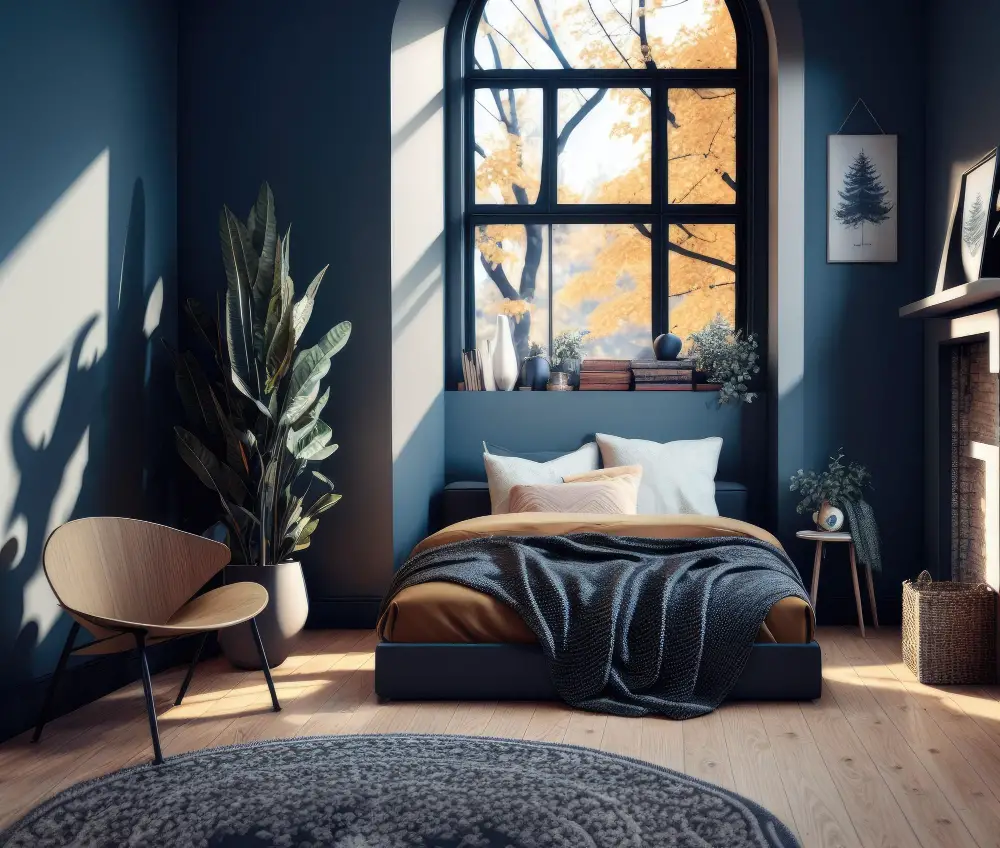
You can create a gallery wall or hang artwork on the same side as the window, drawing attention away from its placement. Consider hanging a large piece of art that covers most of the space between your bed and the window, making it less noticeable.
You can also use symmetrical arrangements to balance out any asymmetry caused by an off-center window. Hang two identical pieces of art or mirrors on either side of your bed for visual harmony.
If you’re feeling creative, try incorporating unique decor elements like tapestries or woven baskets into your design scheme. These items will add texture and depth while also helping to conceal any awkwardly placed windows in your bedroom.
Choosing the Right Color Schemes and Patterns
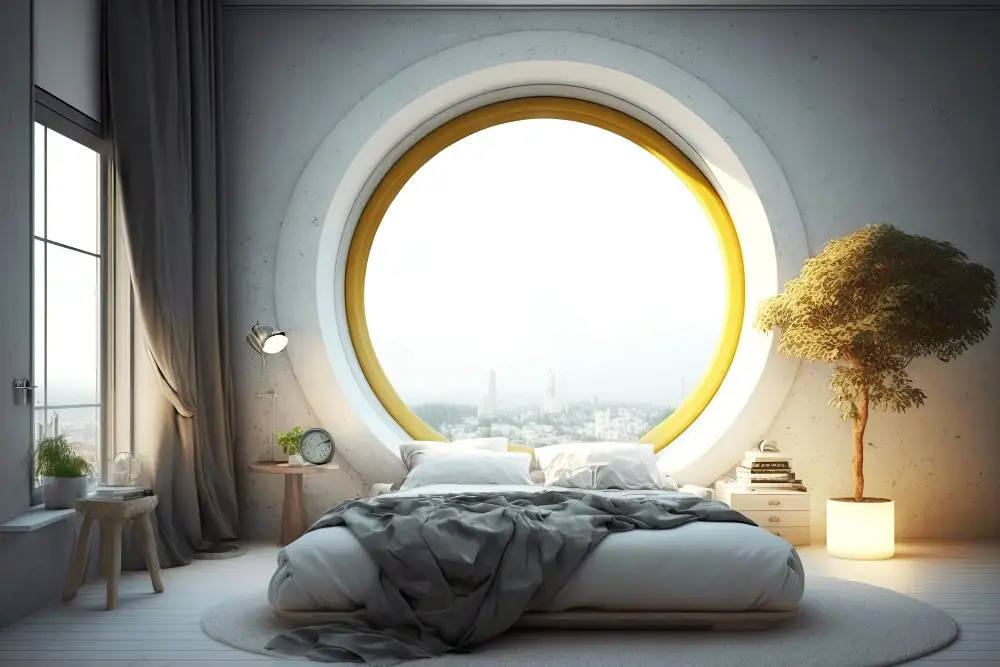
Opting for light-colored walls and bedding can help create a sense of spaciousness while drawing attention away from the window’s placement. You may also want to consider incorporating patterned textiles or wallpaper with symmetrical designs that will distract from any asymmetry caused by the off-center window.
Another option is to use bold colors or patterns on one side of your bed, which will draw attention away from the other side where the off-center window is located. This technique works particularly well if you have a headboard that covers part of the wall space around your bed.
Ultimately, when selecting color schemes and patterns for your bedroom decor, it’s essential to keep in mind what makes you feel comfortable and relaxed in this space.
Balancing Bedroom Aesthetics and Comfort
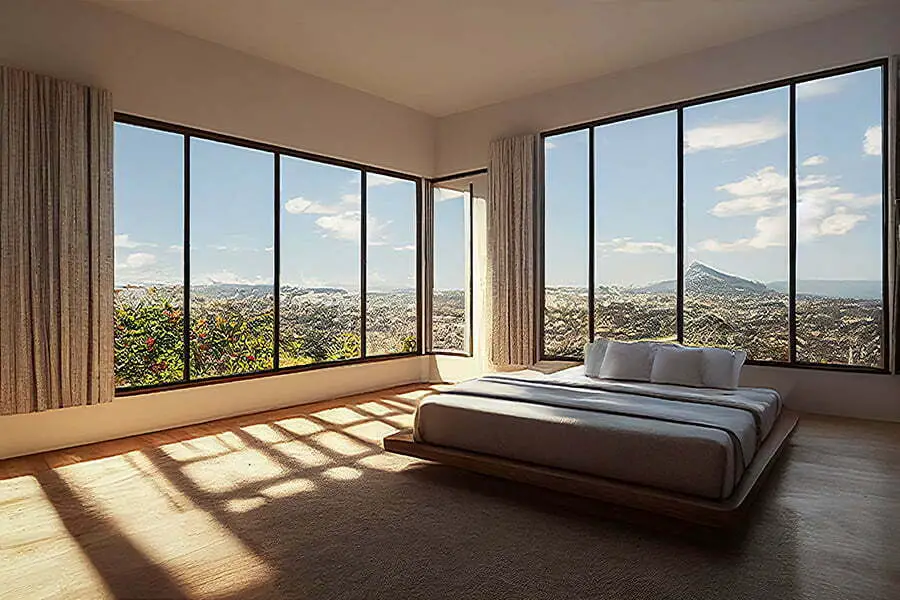
While hiding an off-center window behind your bed can create a more visually appealing space, you don’t want to sacrifice comfort for the sake of style. It’s essential to strike a balance between the two.
One way to achieve this is by selecting comfortable bedding that complements your decor choices. Soft sheets, cozy blankets, and fluffy pillows can make all the difference in creating an inviting atmosphere.
Consider incorporating elements that add texture and warmth without overwhelming the room’s design. A plush rug or textured throw blanket can provide visual interest while also making your space feel cozier.
Final Thoughts On Hiding Off-Center Windows Behind Beds
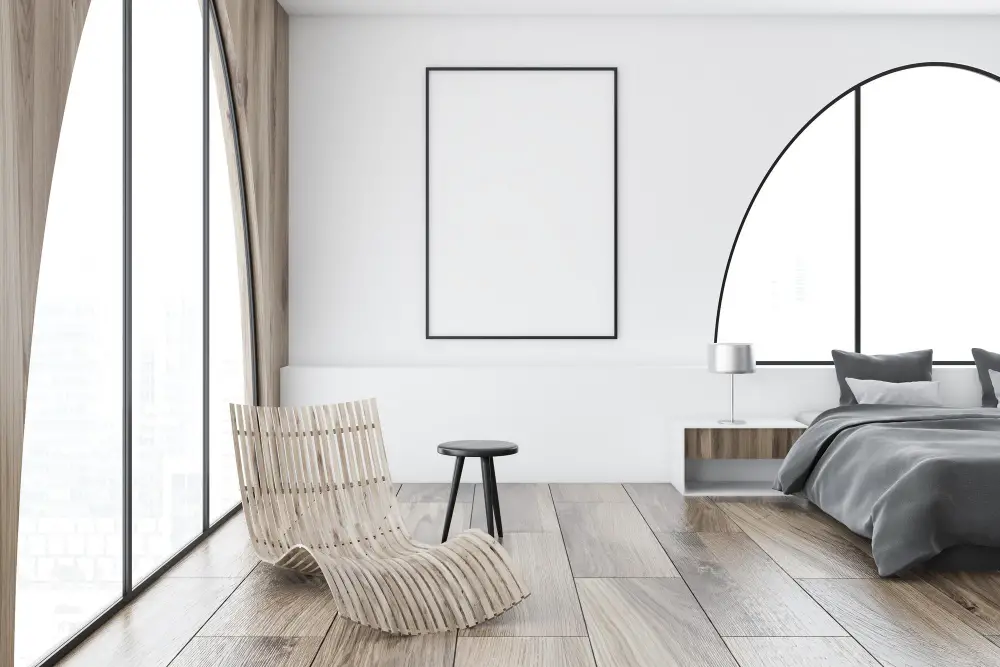
Remember to assess the window position and measure your bed before choosing any design solutions. Consider using furniture such as bookshelves or storage units to disguise the window placement while adding functionality to space.
Selecting appropriate curtains or blinds can help balance out visual asymmetry while providing privacy and light control. Wall-to-wall drapes are also an excellent option for creating symmetry in small spaces.
Don’t forget about incorporating decorative elements such as mirrors or wall decor pieces that complement your color scheme and patterns for added visual interest.
By following these tips on how to hide off-center windows behind beds effectively, you’ll transform any awkwardly placed windows into beautiful focal points that enhance rather than detract from your bedroom aesthetics!
FAQ
How do you deal with an off-center window behind a bed?
To deal with an off-center window behind a bed, balance the space by adding art or a mirror next to the window, or hang curtains to create an illusion of a centered window.
How do you hide an off-center window?
To hide an off-center window, combine wall art, furniture, and accessories to create a balancing effect, such as using wall hangings above short furniture or centering a decorative ledge under the window.
Can a window be behind a bed?
Yes, a window can be behind a bed, but it is generally discouraged due to feng shui rules, energy flow concerns, and traditional design preferences.
How can you use curtains or blinds to camouflage an off-center window behind a bed?
To camouflage an off-center window behind a bed, extend curtains or blinds beyond the window’s edges, creating an illusion of a wider and centered window.
What are the best types of furniture placement to distract attention from an off-center window behind a bed?
To distract attention from an off-center window behind a bed, the best types of furniture placement include layering various sized art pieces, flanking the bed with mismatched bedside tables, or using bold or patterned curtains to create visual balance.
How can you utilize wall art and decor to minimize the visual impact of an off-center window behind a bed?
To minimize the visual impact of an off-center window behind a bed, utilize wall art and decor by arranging them symmetrically around the bed to create a balanced and cohesive look.
Related Stories
- How to Balance an Off Center Window
- How Far Past Window Should Curtain Rod Go: A Comprehensive Guide to Curtain Rod Placement and Installation
- 15 Shibori Curtain Ideas: A Comprehensive Guide to DIY Shibori Curtains
- How to Calculate Curtain Width: Accurate Guide for Perfect Measurements
- How to Hang Valance: Easy Steps for Dressing Your Windows
Recap
